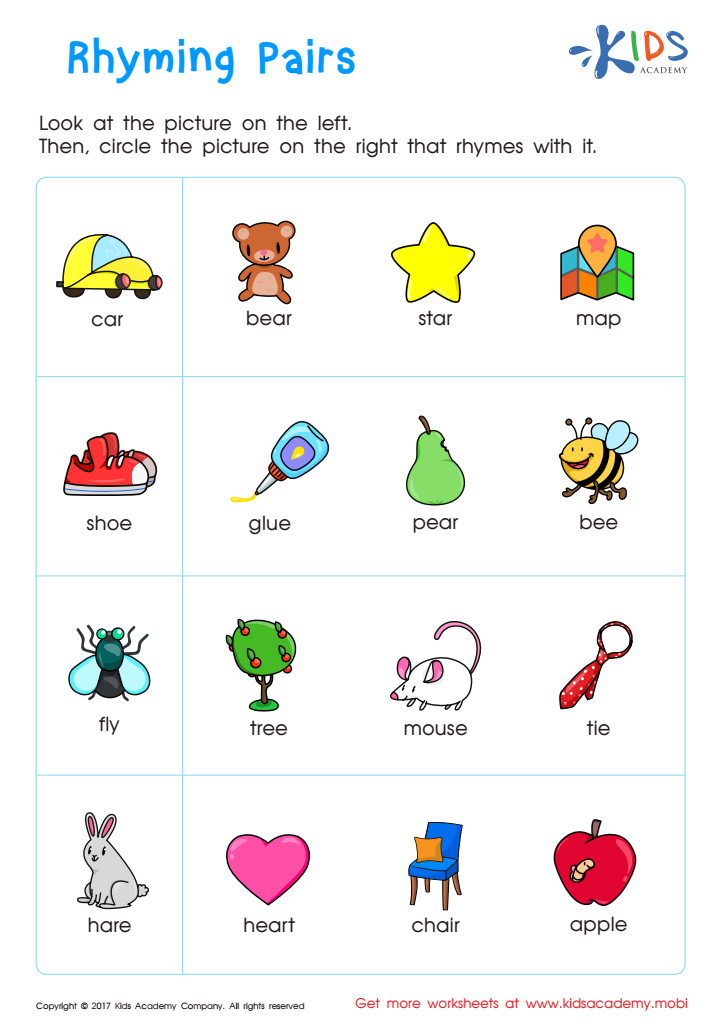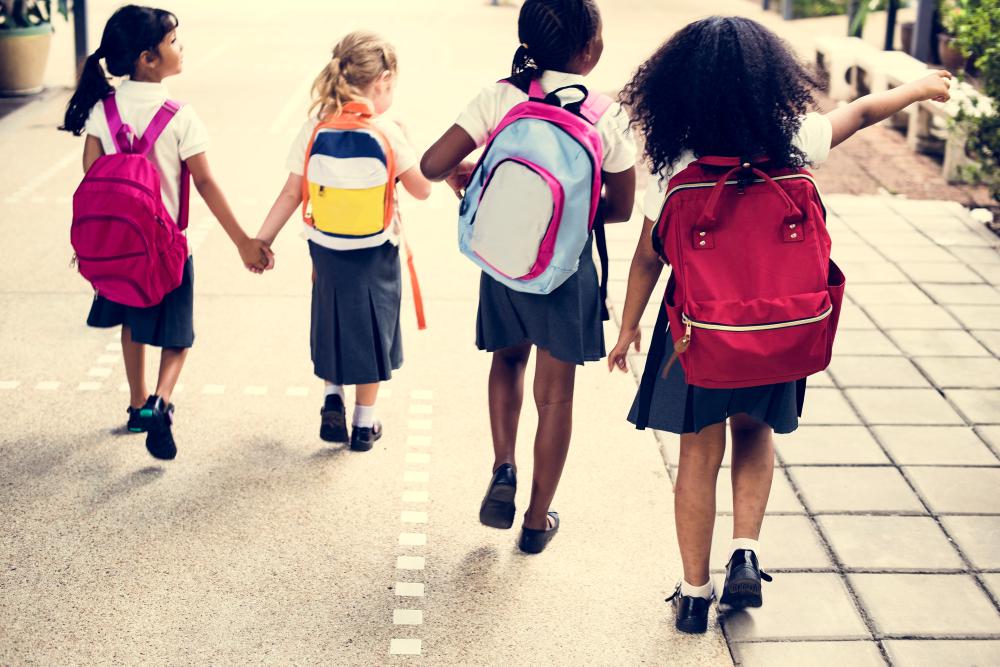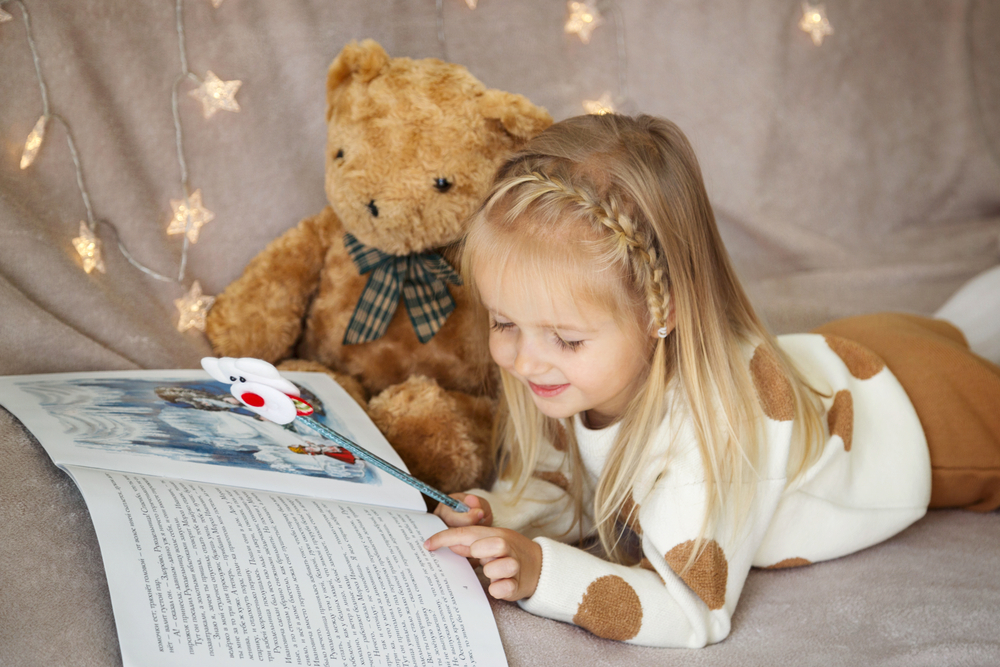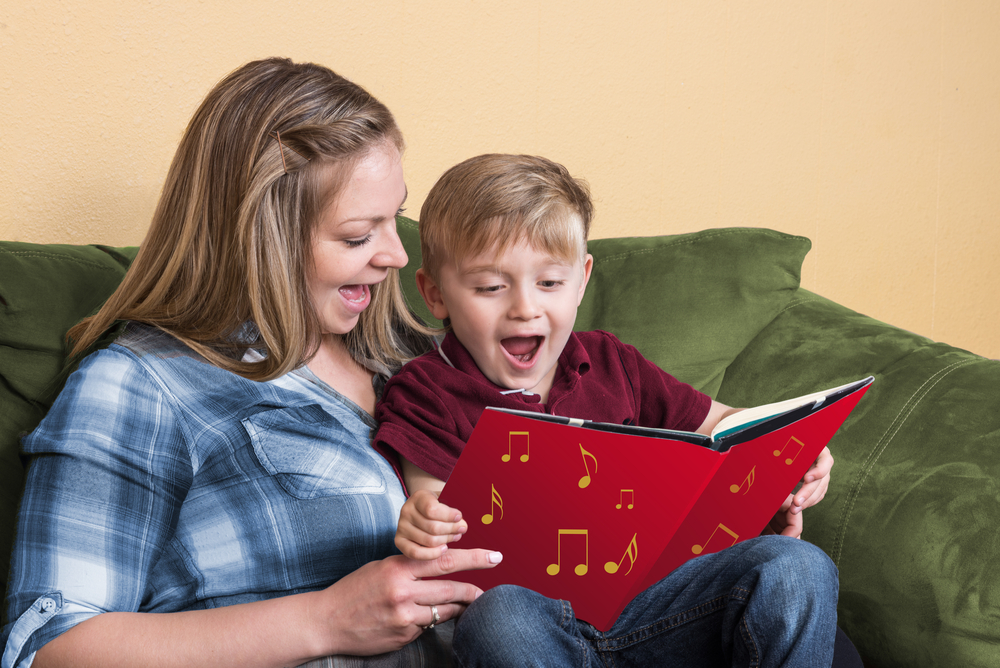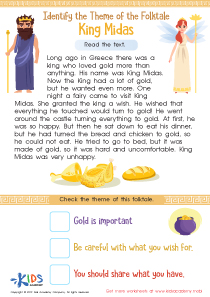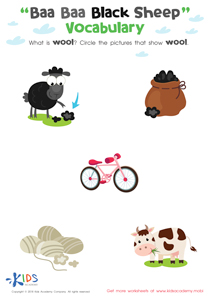Normal Rhyming Words Worksheets for Ages 7-8
9 filtered results
-
From - To
Unleash the fun of phonics with our "Normal Rhyming Words for Ages 7-8" worksheets! Expertly crafted to captivate young minds, this collection is a fantastic resource for children eager to explore the magic of similar-sounding words. Each worksheet is thoughtfully designed to reinforce the understanding of how words can rhyme, enhancing both reading and writing skills in a playful manner. Perfect for second and third graders, these activities not only boost literacy but also encourage creative thinking and joy in learning. Dive into the world of rhymes and watch your child's language abilities flourish with our Normal Rhyming Words worksheets!
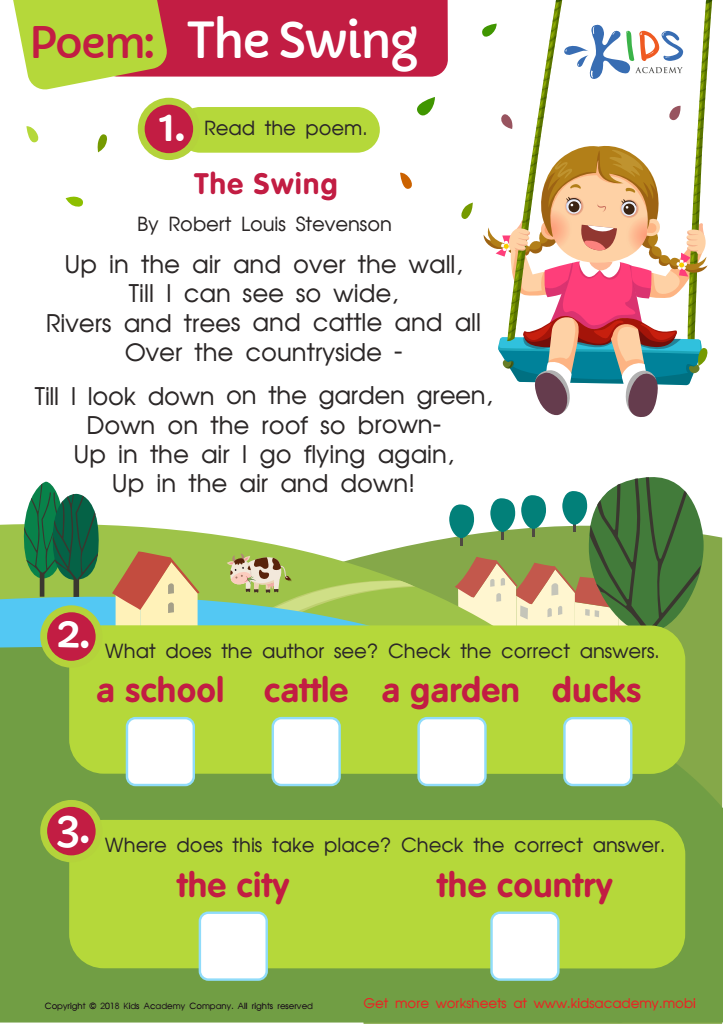

Poem: The Swing Worksheet
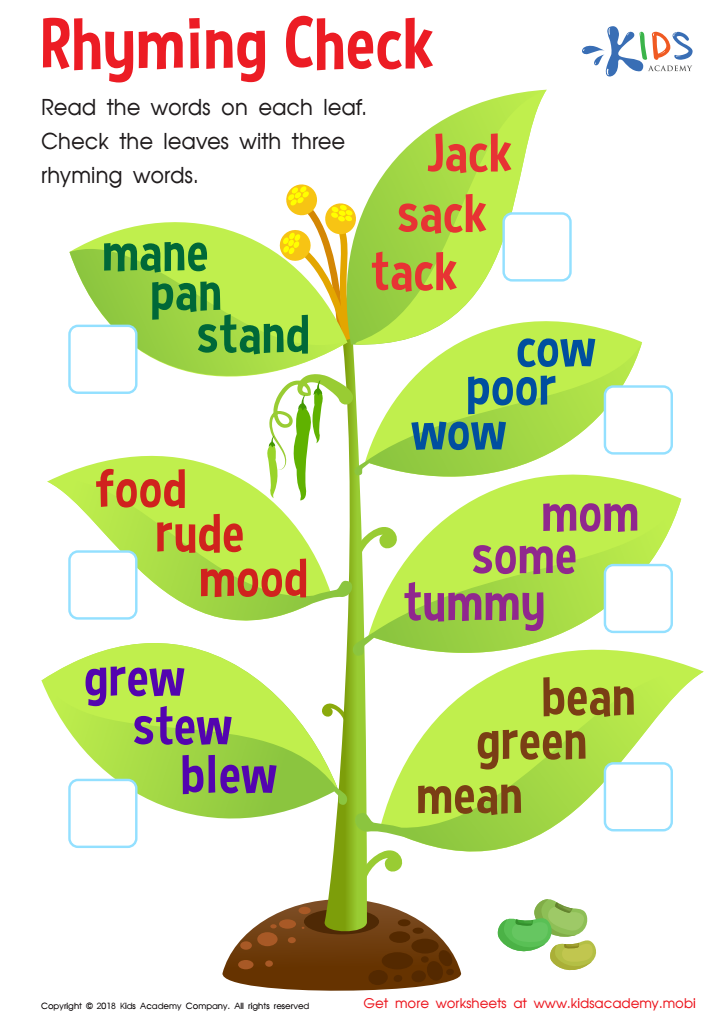

Rhyming Check Worksheet
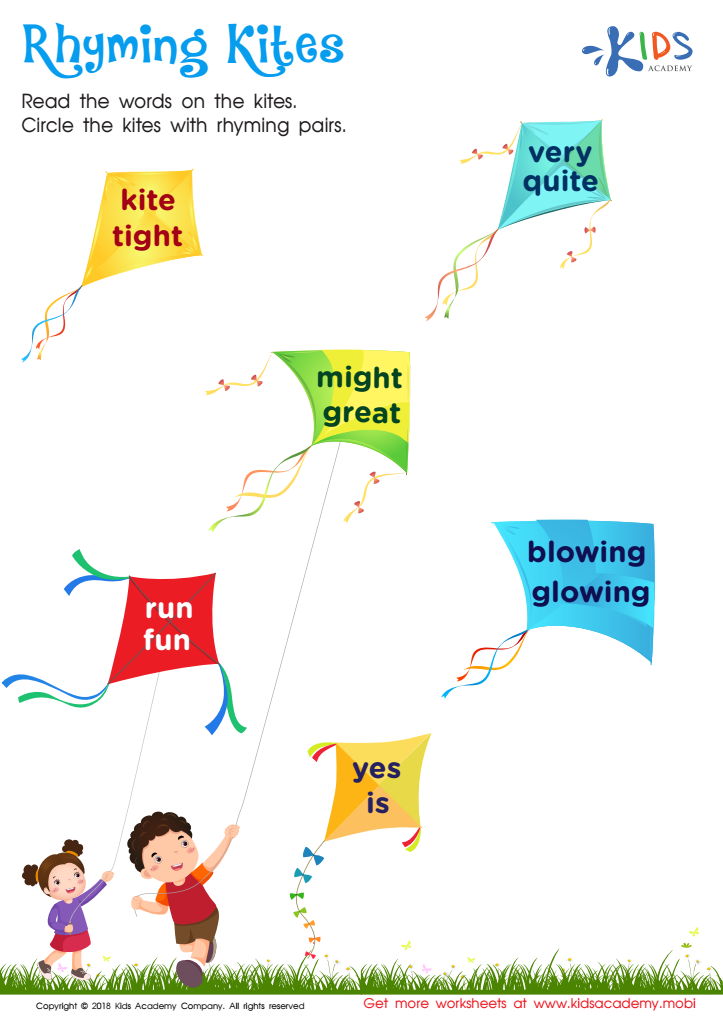

Rhyming Kites Worksheet
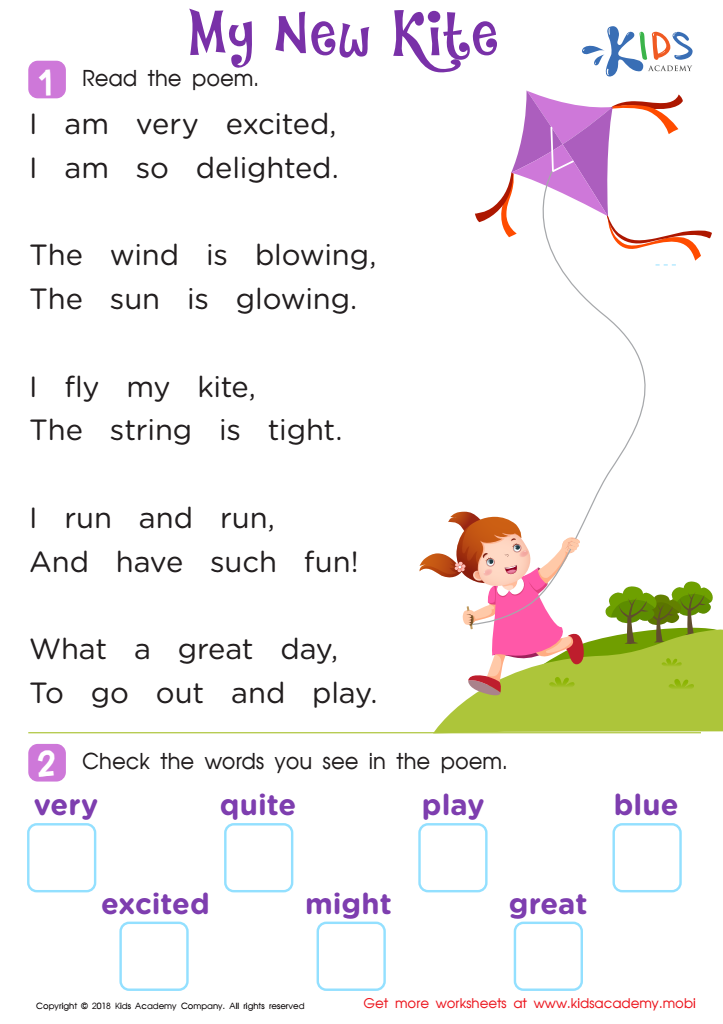

Poem: My New Kite Worksheet
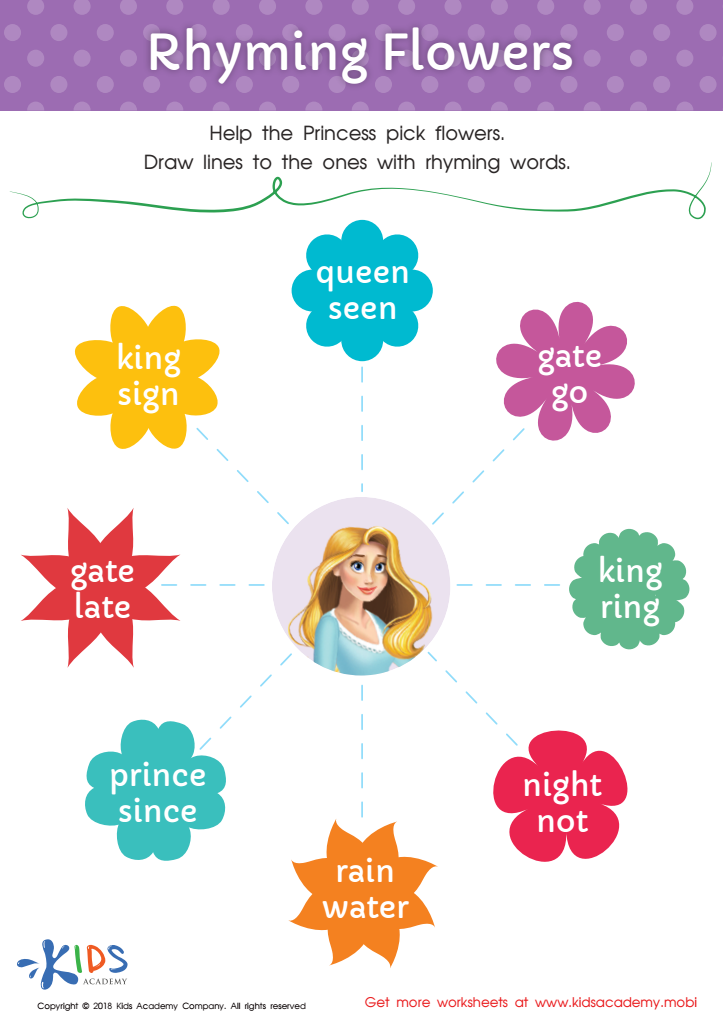

Rhyming Flowers Worksheet
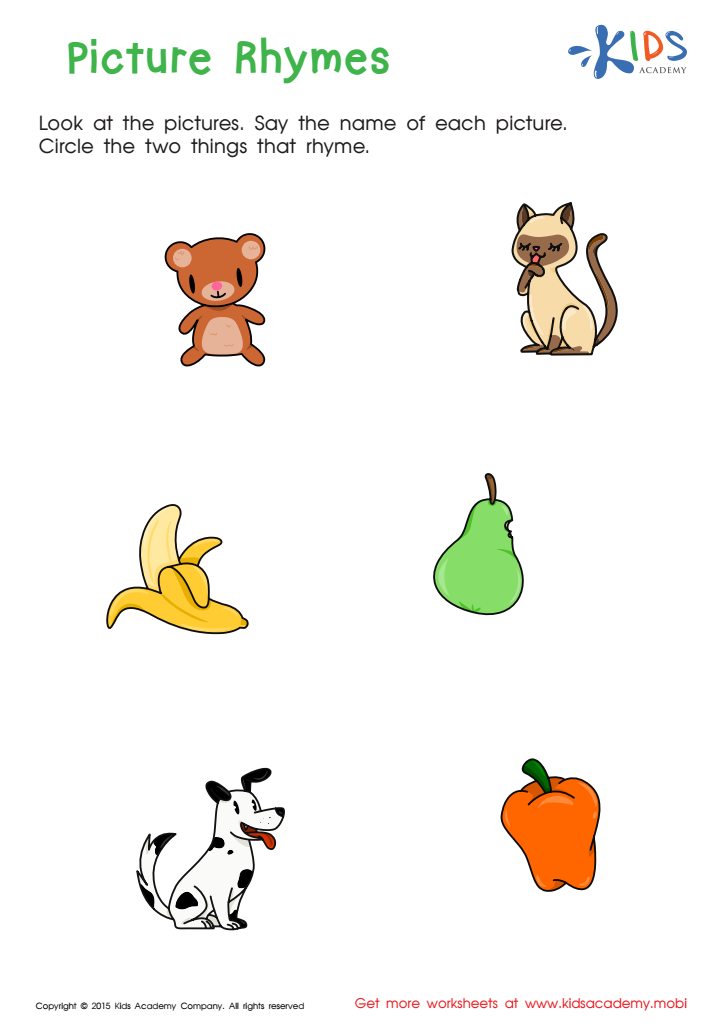

First Words: Picture Rhymes Worksheet
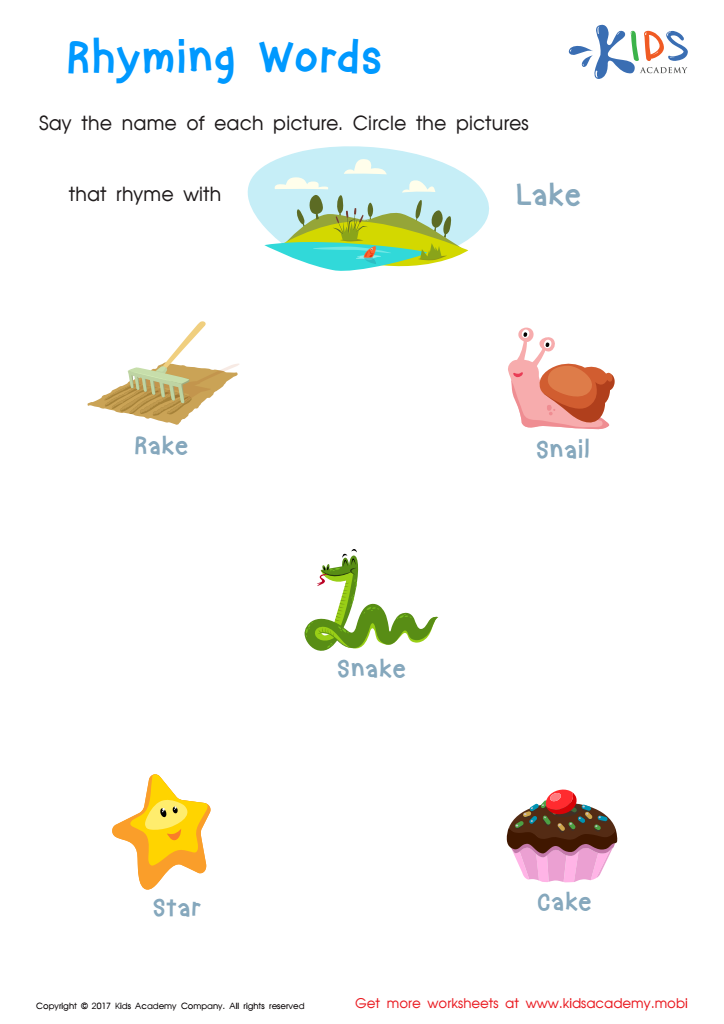

Rhyming Words Rhyming Worksheet
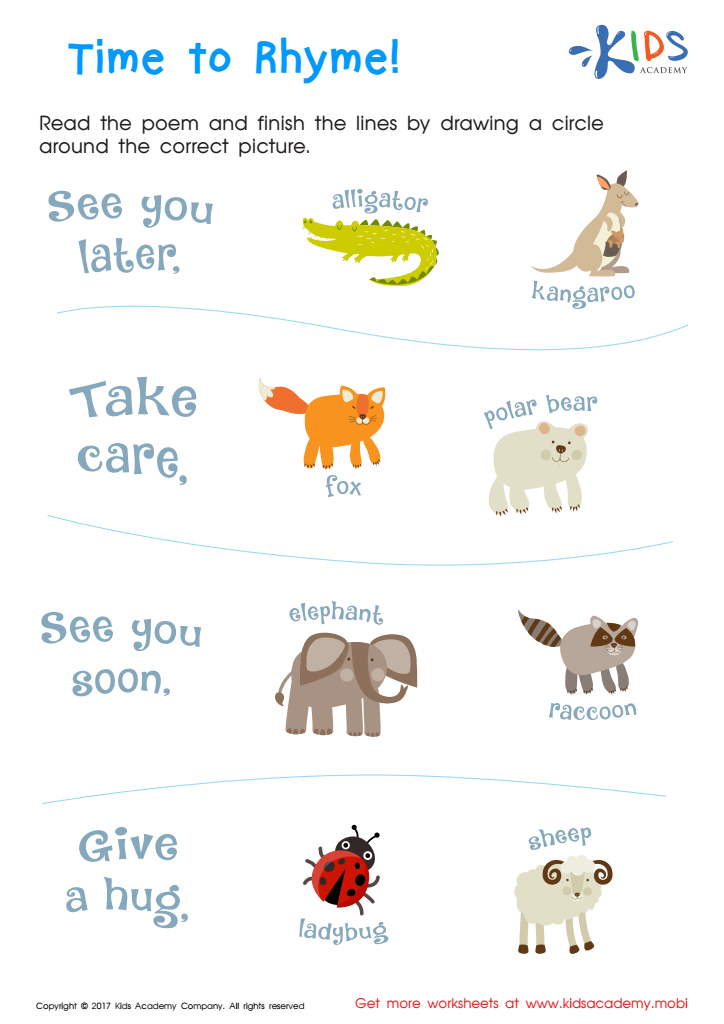

Time to Rhyme Rhyming Worksheet
Normal Rhyming Words worksheets designed for ages 7-8 are an important educational tool for several reasons. At this developmental stage, children are refining their reading and writing skills, and rhyming activities play a pivotal role in enhancing their phonemic awareness. Such worksheets introduce young learners to patterns in sounds, which is foundational for reading fluency and comprehension. By engaging with rhyming words, children begin to recognize word families and common phonetic endings, making it easier for them to decode new words.
Moreover, Normal Rhyming Words worksheets cater specifically to the 7-8 age group, which means that the difficulty level and themes are perfectly suited to their learning stage and interests. This age-specific design encourages a more engaged learning experience, as children find the exercises both challenging and enjoyable.
Additionally, these worksheets aid in vocabulary expansion. As children explore rhymes, they inevitably encounter new words, broadening their language skills. The playful nature of rhyming also fosters creativity and encourages children to experiment with language, which can enhance their writing skills.
In summary, Normal Rhyming Words worksheets for ages 7-8 are a crucial educational resource. They support phonemic awareness, reading fluency, vocabulary development, and creative expression, all while being tailored to the learning needs and interests of young children.

 Assign to My Students
Assign to My Students

